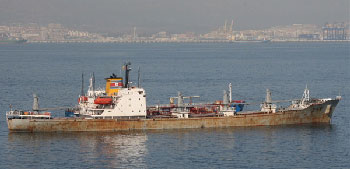UN Committee Inspects Cuban Weapons Seized in Panama

HAVANA TIMES — Members of a UN Committee of Experts began to inspect a shipment of Cuban weapons seized from the North Korean vessel Chong Chon Gang, detained last July in the city of Colon, 80 kilometers north of the Panamanian capital, DPA reported.
The inspection was undertaken in secret, with a view to drafting a report and determining whether the shipment of Cuban weapons bound for North Korea was in violation of the sanctions imposed on Pyongyang by the United Nations.
UN Resolution 1718 prohibits supplying the North Korean government with combat planes and anti-missile systems.
Prior to its arrival in Panama, the UN Committee of Experts announced it would have no contact with the press. The inspectors, who are to remain in Panama for a number of days, have not made their inspection plan in the country public.
Anti-drug enforcement prosecutor Javier Caraballo searched the vessel detained at a port in Manzanillo and was present at the site when the Committee of Experts began their inspection, but did not offer any further details about the Chong Chon Gang, which was intercepted and detained while attempting to cross the Panama Canal with a weapons cargo.
Cuba acknowledged that the vessel carried a shipment of sugar and “240 metric tons of obsolete defensive armaments: two Volga and Pechora anti-aircraft missile systems, nine disassembled rockets, two MIG-21 Bis and 15 engines for these types of planes, all of them manufactured in the mid-20th century”, reportedly to be repaired and returned to Cuba.
Caraballo stressed that the weapons described by Cuban authorities were indeed found during the inspection of the vessel, which has a record of violations around the world. He added, however, that, in addition to this, pieces of SA2 and SA3 type missiles were also discovered on board, and that this gives the armaments confiscated a different, more serious connotation.
Article 335 of Panama’s Penal Code prohibits the transportation of explosives or firearms of any kind, including their components and munitions. Violation of the said law entails prison sentences of six to eight years and even longer, if the use of false documents in the transportation of such weaponry can be demonstrated.
To inspect the weapons, 10,000 tons of sugar (contained by sacks placed over the weapon containers) had to be manually unloaded from the vessel. The thirty plus members of the North Korean crew are facing criminal charges, but have refused to offer statements.






These would be entirely defensive armaments; a “threat” only to the warplanes of a country attempting to bomb Cuba or North Korea. I wonder how many of the innumerable US warships passing through the seized territory of Panama and armed to the teeth with offensive weapons – bombs, cruise missiles, bombers on aircraft carriers, and such – and on their way to attack other countries, including Panama itself, have been seized under Article 335?
Perhaps it would help to recall that the present “government” of Panama was installed by US troops following their 1989 invasion of Panama to replace their previous puppet, General Noriega, with a more reliable one that could be counted on to sign off on US control of the Panama Canal for another 100 years. The invasion took place 10 days before the canal was to revert to Panamanian ownership.